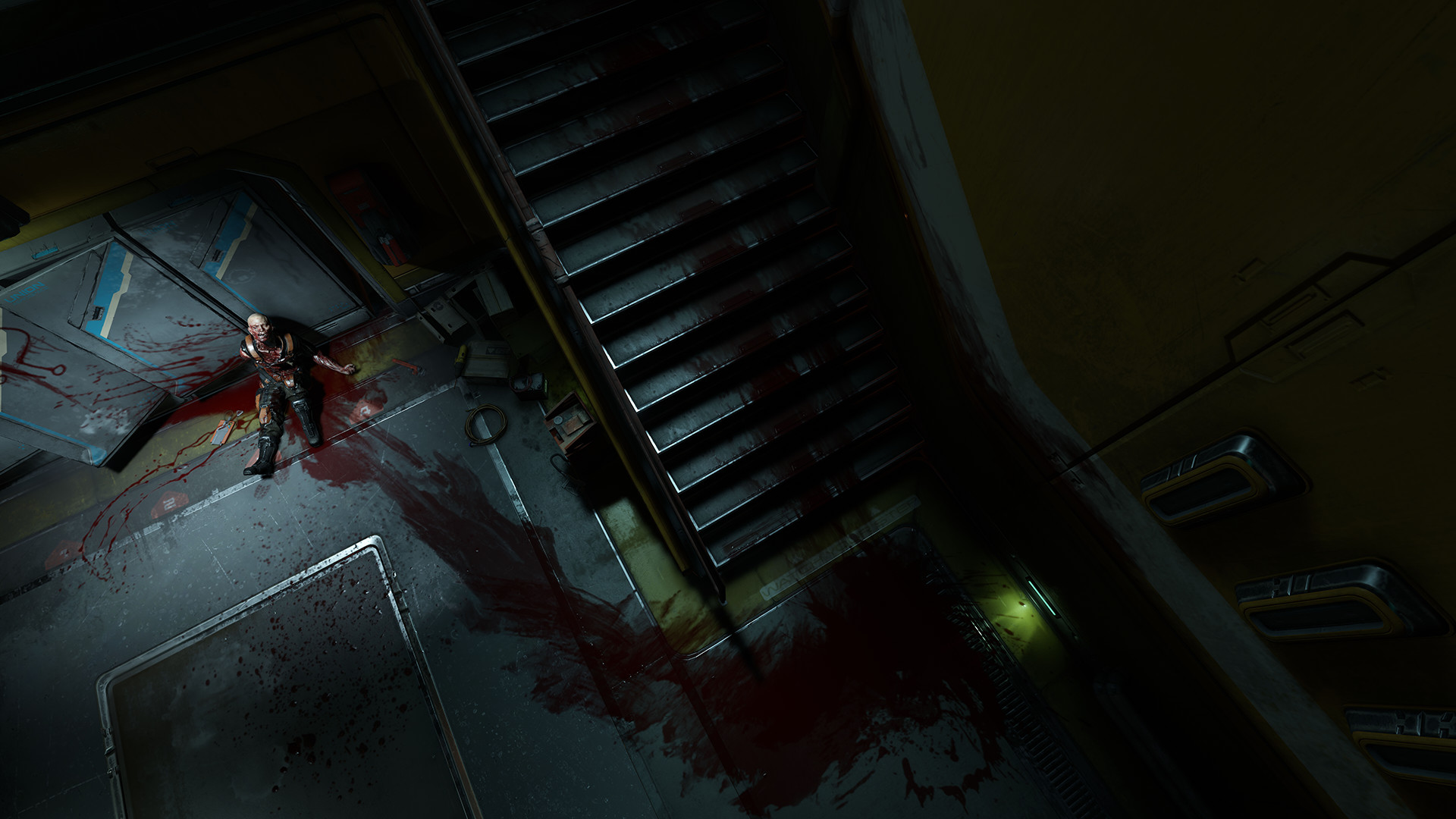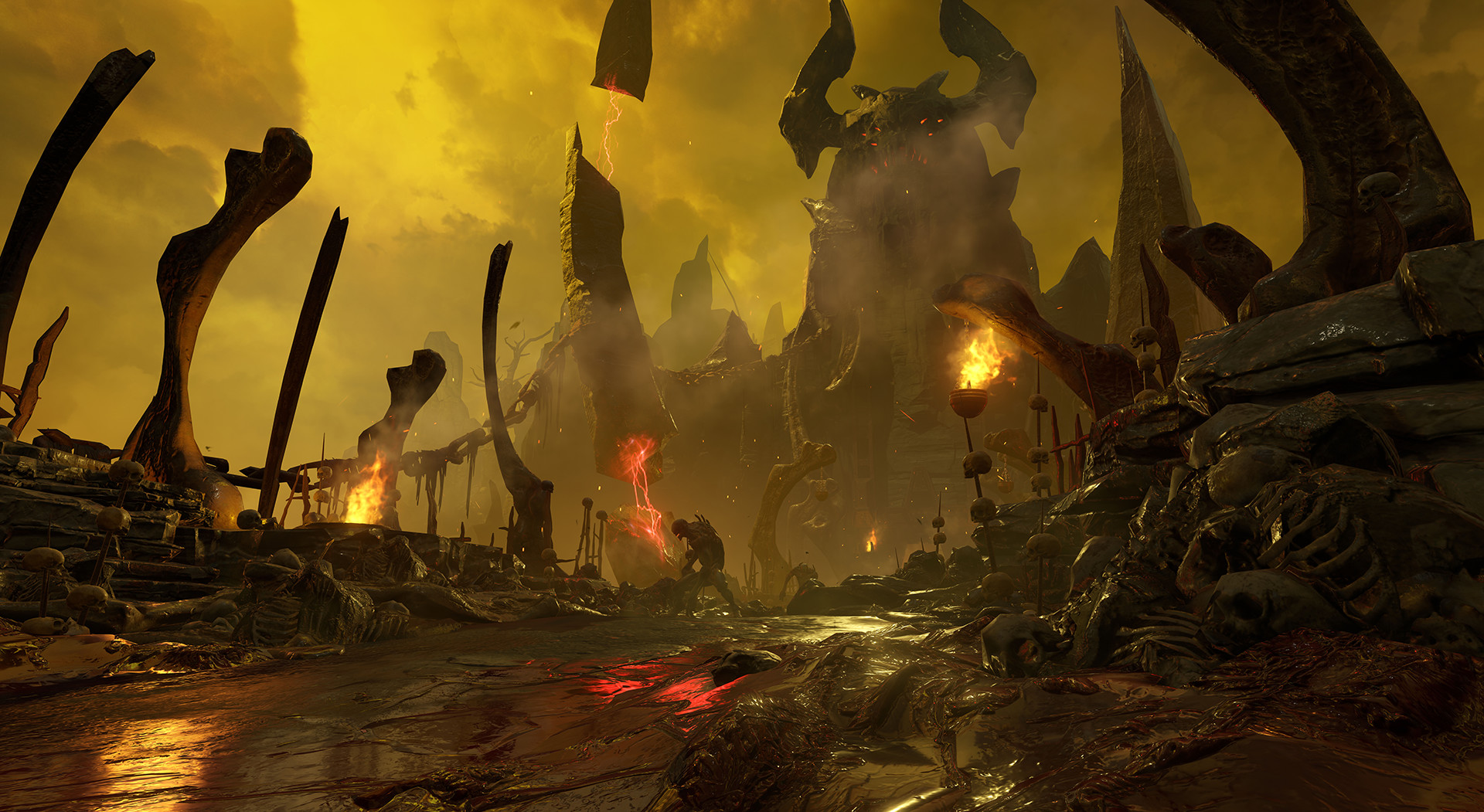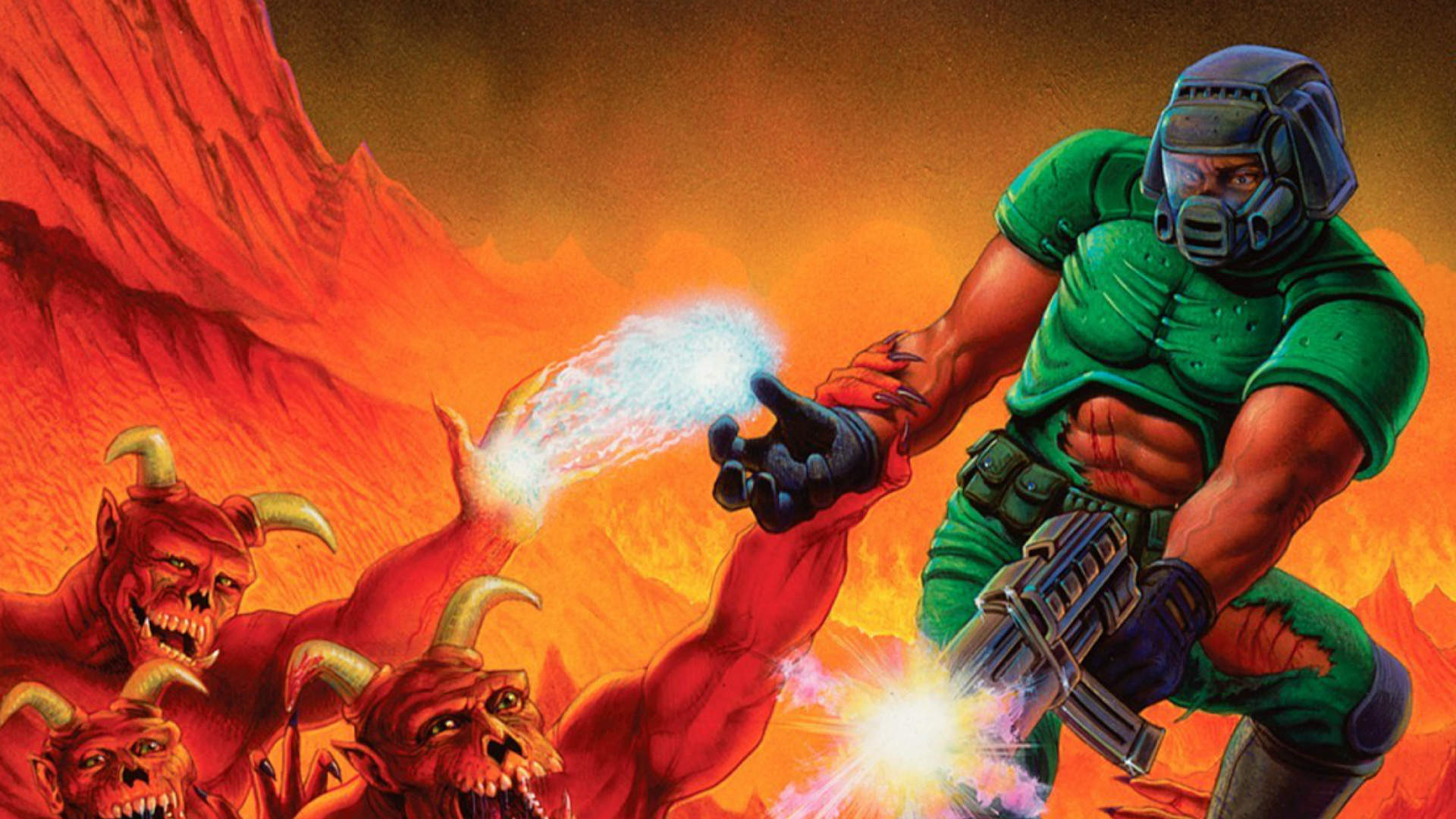The return of the granddaddy of all first-person shooters, Doom (2016), was a momentous occasion for gamers around the world. It marked the revival of a franchise that laid the foundations for an entire genre. This in-depth review will dissect the monumental release, analyzing its gameplay, graphics, story, level design, and the legacy it has cemented for itself.
Unrelenting Gameplay
Right off the bat, Doom (2016) establishes itself as a no-holds-barred adrenaline pump. The developers at id Software went back to the drawing board and looked at what made the original Doom games so engaging. They understood that the heart of Doom is speed and aggression.
Doom Slayer, the protagonist, moves at breakneck speeds. The gunplay is responsive and satisfying, with weapons that feel impactful and lethal. The Glory Kill system is a particular standout, allowing players to execute demons in gruesome manners when they are staggered, which also rewards you with health and ammo.
This brutal ballet of bullets and bloodshed is underpinned by a resource management system that encourages aggression. Instead of hiding and waiting for health to regenerate, players are compelled to be constantly on the offensive, creating a frenetic and unrelenting gameplay loop.
Graphics and Aesthetic
Aesthetically, Doom (2016) embraces its heritage while pushing for modern fidelity. The design of the demons stays true to the originals, but with added layers of detail and grotesquery that make them feel menacing and tangible.

The environments are a blend of the industrial and the infernal, creating a unique atmosphere that’s both familiar and new. The game runs on the id Tech 6 engine, which allows for remarkable visual fidelity and performance. The textures are sharp, the lighting is moody, and the animations are smooth.
The special effects, particularly the cacophony of gore during the Glory Kills, are executed with such finesse that they become a spectacle in their own right. All these elements coalesce to form a visually breathtaking experience.
Story and Lore
The narrative of Doom has never been its focal point, and Doom (2016) understands that. However, this installment weaves a surprisingly rich tapestry of lore for those who seek it.
Doom Slayer is portrayed as an ancient warrior, whose sheer hatred and fury toward the demons are almost mythical. The UAC, the Mars facility where the game is primarily set, has its own share of mysteries and narrative threads. The game doesn’t shove the story in the player’s face, but through codex entries and environmental storytelling, it builds a world that is as intriguing as it is brutal.
The story serves as a backdrop that adds context and weight to the unrelenting violence, without overshadowing the gameplay.
Masterful Level Design
Doom (2016) pays homage to the labyrinthian levels of the 90s, while incorporating modern sensibilities. Levels are intricate, encouraging exploration and rewarding players with upgrades, lore, and easter eggs.

The game avoids a linear structure, instead opting for a more open level design. This design philosophy complements the fast-paced gameplay, as players can approach combat encounters from various angles and vantage points.
Furthermore, the inclusion of classic Doom maps as unlockable content is not just a nostalgic nod, but also a statement that asserts the timelessness of great level design.
The Legacy of Doom (2016)
Doom (2016) did not just live up to its heritage, it reinvigorated it. By modernizing the core elements that made the original Doom iconic, it has become a paragon of first-person shooter design. The impact of its design decisions can be seen in games that followed.

Moreover, it laid the groundwork for its own sequel, Doom Eternal, to take the baton and further expand upon the groundwork laid in Doom (2016).
As a revitalization of a beloved franchise and a shining example in its genre, Doom (2016) is not just a game, but a tribute to the enduring potential of video games as a medium.
Conclusion
Doom (2016) stands tall as a titan in the first-person shooter genre. With its blistering pace, responsive gunplay, striking visuals, underlying lore, and intelligent level design, it forms a masterclass in game design. It respects its roots while fearlessly carving its own path. For any fan of action or shooter games, this is an unmissable journey.

